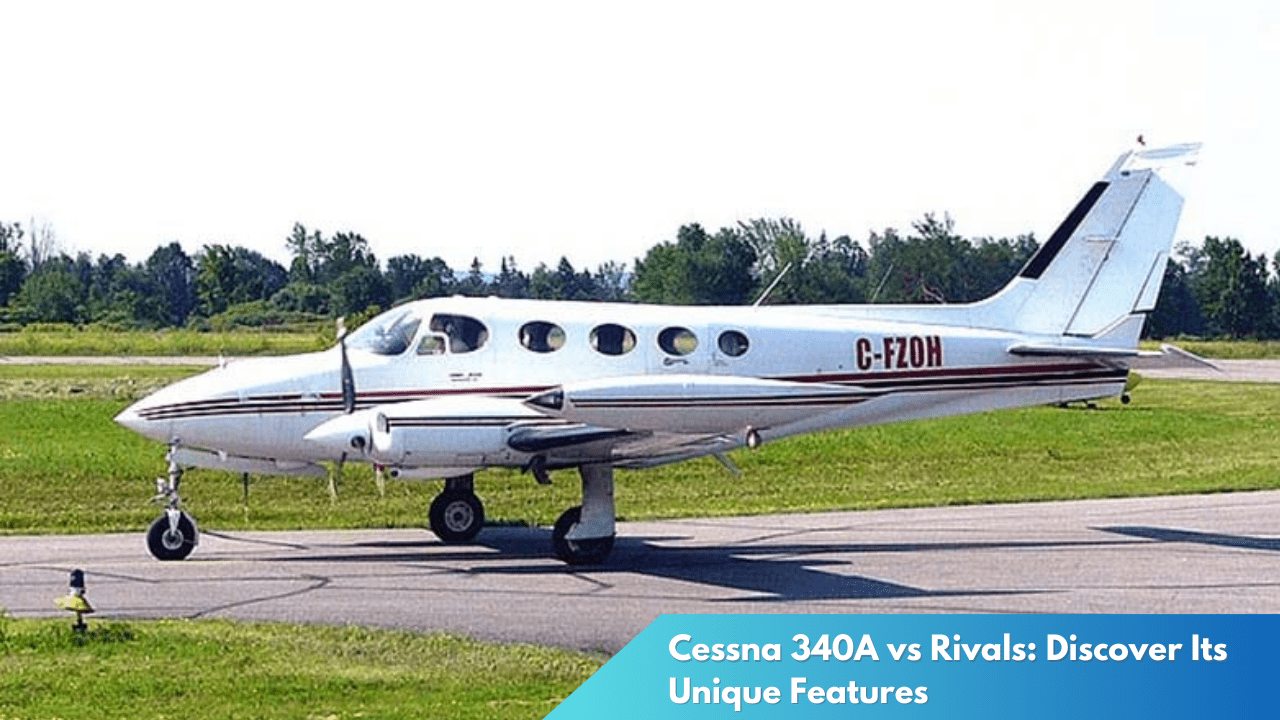Cessna 340A vs Rivals: Discover Its Unique Features
In the world of light twin-engine aircraft, the Cessna 340A stands out for its blend of performance, comfort, and versatility. As pilots and aviation enthusiasts evaluate options for personal and business travel, understanding how the Cessna 340A compares to its competitors is crucial. This article delves into the capabilities of the Cessna 340A, highlighting the unique features that distinguish it from other aircraft in its class.
Comparing the Cessna 340A to Its Competitors

When looking at twin-engine aircraft, the Cessna 340A often competes with models like the Beechcraft Baron 58, Piper Seneca V, and the Piper Navajo. The Cessna 340A positions itself as a middle ground, offering a balance of speed, range, and cabin comfort. Its pressurized cabin is one of the more notable features, allowing for a higher cruising altitude compared to non-pressurized competitors, which often translates into a smoother ride above turbulent weather.
In terms of performance, the Cessna 340A excels with a maximum cruise speed of around 229 knots, which is comparable to, and in some cases slightly faster than, its rivals. Its range is also competitive, with the capability to fly approximately 1,400 nautical miles without refueling. This range and speed make it an attractive option for those needing to cover significant distances quickly without sacrificing comfort.
The Cessna 340A’s payload capacity is another consideration, offering a respectable load limit that suits both business and leisure needs. While the Piper Navajo offers a larger cabin, the 340A provides a versatile and comfortable cabin layout that can be reconfigured to accommodate various seating and cargo needs. This adaptability, combined with its speed and range, makes the Cessna 340A a compelling choice in its category.
Unique Features That Set the Cessna 340A Apart

One of the standout features of the Cessna 340A is its pressurized cabin, a rarity in this class of aircraft. This pressurization facilitates higher cruising altitudes, enhancing both the comfort and safety of passengers by avoiding lower altitude turbulence and allowing for a more efficient flight path. This feature alone often places the 340A at the top of many pilots’ lists when considering comfort and performance.
Another distinctive advantage of the Cessna 340A is its advanced avionics suite, particularly in models that have been upgraded over the years. Many 340As on the market today feature modern Garmin avionics, including GPS, autopilot, and weather radar, which not only improve flight safety but also ease the workload on pilots. This technological edge is a significant factor for those who prioritize advanced navigation and communication systems in their aircraft.
The aircraft’s design also incorporates efficient and robust landing gear, providing reliable performance across a variety of airfields. This capability is particularly beneficial for pilots who need versatility in their flight operations, allowing access to smaller, less developed airports. Combined with its overall robust construction, the Cessna 340A is built to handle diverse flying conditions, adding to its appeal in comparison to its competitors.
The Cessna 340A continues to hold its ground as a formidable contender in the light twin-engine aircraft market. Its combination of a pressurized cabin, solid performance metrics, and modern avionics make it a preferred choice for many pilots. When stacked against its rivals, the 340A’s unique features offer compelling reasons to choose it, whether for business or personal flying needs. As pilots evaluate their options, the Cessna 340A’s balance of comfort, technology, and versatility ensures its place as a leader in its class.



